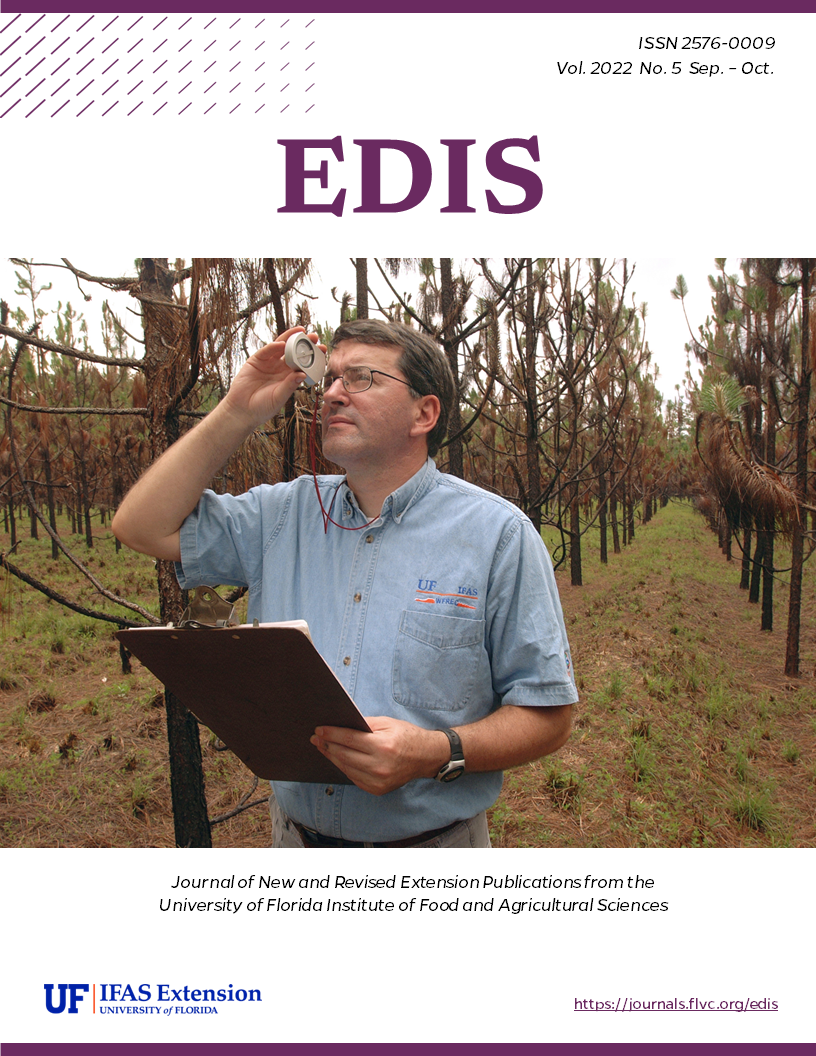Abstract
This initial article in the Best Practices for Mentoring series provides SBAE cooperating teachers with a basic understanding of their role as cooperating teachers and mentors, as well as introduces the three major areas of focus for these best practices. Written by Heather R. Nesbitt and Debra M. Barry, and published by the UF/IFAS Department of Agricultural Education and Communication; 4 pp.
https://edis.ifas.ufl.edu/wc419
References
Alemdag, E., & Simsek, P. O. (2017). Pre-service teacher’s evaluation of their mentor teachers, school experiences, and theory-practice relationship. International Journal of Progressive Education, 13(2), 165-179. https://ijpe.inased.org/makale_indir/244
Barry, D. (2019). Evaluation of student teacher supervision and mentoring through the preparations and assistance for cooperating teachers (PACT) program for assisting and supporting agriscience cooperating teachers in Florida (Publication No. 27546454) [Doctoral dissertation, University of Florida]. ProQuest Dissertations Publishing.
Darling-Hammond, L. (2006). Constructing 21st-century teacher education. Journal of Teacher Education, 57(3), 300–314. https://doi.org/10.1177%2F0022487105285962
Darling-Hammond, L. (2010). Teacher education and the American future. Journal of Teacher Education, 61(1-2), 35–47. https://doi.org/10.1177%2F0022487109348024
Edgar, D. W., Roberts, T. G., & Murphy, T. H. (2011) Exploring relationships between teaching efficacy and student teacher – cooperating teacher relationships. Journal of Agricultural Education, 52(1), 9-18. https://doi.org/10.5032/jae.2011.01009
Hall, K. M., Draper, R. J., Smith, L. K., & Bullough, R. V. (2008). More than a place to teach: Exploring the perceptions of the roles and responsibilities of mentor teachers'. Mentoring and Tutoring: Partnership in Learning, 16(3), 328-345. http://doi.org/10.1080/13611260802231708
Hart, A. (2020). Interpersonal dynamics of the supervisory triad of pre-service teacher education: Lessons learned from 15 years of research. Georgia Educational Researcher, 17(2), Article 3. https://doi.org/10.20429/ger.2020.170203
Hennissen, P., Crasborn, F., Brouwer, N., Korthagen, F. & Bergen, T. (2011). Clarifying pre-service teacher perceptions of mentor teachers’ developing use of mentoring skills. Teaching and Teacher Education, 27(6), 1049–1058. https://doi.org/10.1016/j.tate.2011.03.009
Kasperbauer, H. J., & Roberts, T. G. (2007). Changes in student teacher perceptions of the student teacher-cooperating teacher relationship throughout the student teaching semester. Journal of Agricultural Education, 48(1), 31-41. https://files.eric.ed.gov/fulltext/EJ840065.pdf https://doi.org/10.5032/jae.2007.01031
Norris, R. J., Lark, Jr., A., & Briers, G. E. (1990). Selection of student teaching centers and cooperating teachers in agriculture and expectations of teacher educators regarding these components of a teacher education program: A national study. Journal of Agricultural Education, 31(1), 58-63. https://doi.org/10.5032/jae.1990.01058.
Roberts, T. G. (2006). Developing a model of cooperating teacher effectiveness. Journal of Agricultural Education, 47(3), 1-13. https://doi.org/10.5032/jae.2006.03001
Rocca, S. J. (2005). Predicting preservice agriculture teachers' intentions to teach utilizing person inputs, contextual influences, teacher efficacy, and outcome expectations (Publication No. 3178030). [Doctoral dissertation, University of Florida]. ProQuest Dissertations & Theses Global.
Russell, M. L., & Russell, J. A. (2011). Mentoring relationships: Cooperating teachers' perspectives on mentoring student interns. Professional Educator, 35(1), 21. https://files.eric.ed.gov/fulltext/EJ988202.pdf
Sarnoff, K & Ellerbock, C. R. (2020). Stronger together: A collaborative approach to middle school STEM teacher preparation. School-University Partnership, 13(1). https://files.eric.ed.gov/fulltext/EJ1249352
Tang, S. Y. F., & Choi, P. L. (2007), Connecting theory and practice in mentor preparation: Mentoring for the improvement of teaching and learning. Mentoring and Tutoring: Partnership in Learning, 13(3), 383-401. http://dx.doi.org/10.1080/13611260500206002

